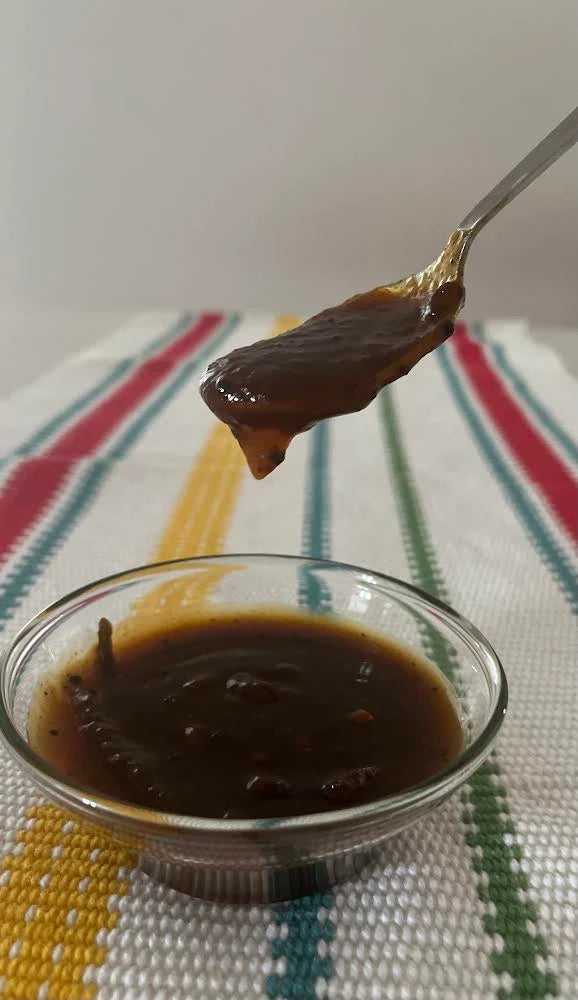
Puli Inji: The Tangy and Spicy Delight of South Indian Cuisine
Share
Lip-smackingly tangy, tastefully sweet, satisfyingly spicy, or sometimes an explosion of all of this at one go! That’s how we like describing Puli Inji, the sweet, tangy, and mildly spiced dip or chutney. Puli Inji is a traditional South Indian condiment or relish from the state of Kerala, India. ‘Puli’ means tangy and ‘inji’ means ginger, representing the two important ingredients in the dish. The ingredient which contributes to the sweetness is jaggery. It is a delicious accompaniment to many south Indian dishes. In fact, this is the fourth condiment served during Sadhya, the vegetarian feast served in banana leaf in Kerala, after salt, banana chips and sharkara varatti.
Puli Inji is the commonly used term, but it’s sometimes also known as Inju Puli or Inji curry. While the core ingredients being tamarind, jaggery and ginger will remain, slight adjustments to the amount used as well as some additional ingredients results in variations to the dish in different regions. For example, towards the southern part of Kerala, there will be a dominance for ginger that you get to bite the pieces which gives a spice aftertaste. Here, they call it Inji curry where ginger is predominant. However, towards the northern side of Kerala, the ingredients are blended to a paste which makes and gives each flavour equal prominence and calls the dish Puli Inji.
While it's challenging to pinpoint the exact date of Puli Inji's origin, the key ingredients used in this condiment, such as ginger and tamarind, have been a part of Indian cuisine for centuries. Ginger has a long history of use in Indian traditional medicine and culinary practices. Puli Inji is closely associated with Kerala's culinary heritage, and it is an integral part of the state's traditional cuisine. Over time, various regions and communities within Kerala have developed their own variations of Puli Inji, adding unique twists and flavours to the condiment.
How to Make Puli Inji?
The making of Puli Inji is an art, where ingredients of different taste profiles are blended together and slow cooked for some time, to arrive at a unique flavour. Puli Inji is simple and can be easily prepared at home, if you have the patience to make it to reach the right consistency. Apart from the key ingredients, the other items include mustard seeds, fenugreek seeds, curry leaves and dried red chillies, which are most common in every Indian household as these are often used for ‘tadka’. So more than the ingredients used, it’s the preparation style that one needs to nail to make an amazing side to your meals. It’s a step-by-step process of sauteing the ginger which contributes to the spiciness, followed by mixing the tamarind pulp which checks the list for tanginess and finally the sweetener, Jaggery. Consistency matters a lot in the making of Puli Inji. The right consistency is when it’s a not-so-thin or not-so-thick paste.
Puli Inji Uses
Another advantage of Puli Inji is its shelf life. If stored and handled properly, it can stay for a few weeks when kept at room temperature in an airtight container, and about 3 months when stored in the refrigerator. This is when no preservatives are added. Puli Inji is a versatile condiment that pairs well with a variety of Indian dishes. Its sweet, tangy, and spicy notes can complement both vegetarian and non-vegetarian meals. Puli Inji is a classic accompaniment for steamed rice in South Indian meals. A simple combination of rice and Puli Inji can be incredibly satisfying. It can also be served as a side dish with dosa and idli. The tangy and spicy flavours of Puli Inji enhance the taste of dosa and idli. Some people like to have Puli Inji alongside biryani or pulao to add a contrasting sweet and tangy flavour. Most restaurants in the Malabar/northern side of Kerala serve Puli Inji with your Biriyani. Not just the rice dishes, but even with chapati or roti it can be a great side dish, especially during the days when you are too lazy to cook. Apart from some of the mainstream combinations, a few other ideas to try are using Puli Inji as a dipping sauce for snacks like pakoras, bhajis, or vadas. Or even air fried or baked crisps and crackles. When you make your sandwiches next, try adding a layer of Puli Inji to it or use in wraps to give them a unique sweet and tangy kick. It can also be used as a dressing for salads, especially those with roasted vegetables or grains. Drizzle Puli Inji over grilled or roasted vegetables to add a burst of flavour. You can also drizzle it over the Indian chaats.
Health Benefits of Puli Inji
The ingredients used to prepare Puli Inji comes with its own health benefits and together as a blend it’s a great source of nutrients. Ginger is well-known for its digestive properties and can help alleviate indigestion, bloating, and nausea. It also possesses anti-inflammatory properties, which may help reduce inflammation in the body and alleviate symptoms of inflammatory conditions. Ginger as well as tamarind contain antioxidants that can help neutralize harmful free radicals in the body, potentially reducing oxidative stress. Tamarind is a good source of vitamin C, which is important for the immune system, skin health, and wound healing. The tangy and spicy flavours of Puli Inji can stimulate the appetite and make meals more enjoyable, which may be particularly beneficial for individuals with reduced appetite. It's important to note that while Puli Inji contains potentially beneficial ingredients, it is typically consumed in small quantities as a condiment or side dish rather than in large amounts.
Puli Inji is more than just a condiment; it's a culinary journey through South India's rich flavours and traditions. Its flavour notes make it a beloved companion to a wide range of dishes, offering not only taste but also potential health benefits. Puli Inji is a taste of Kerala's heart and soul, and a testament to the culinary diversity of India's southern regions.
